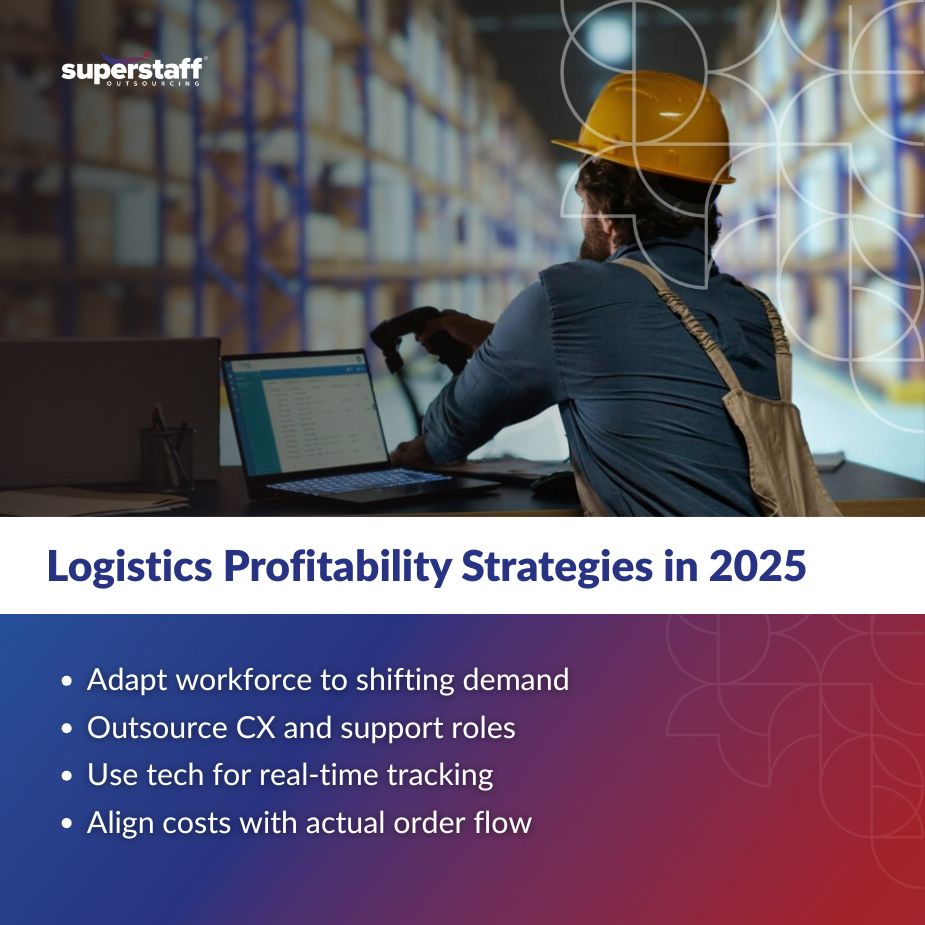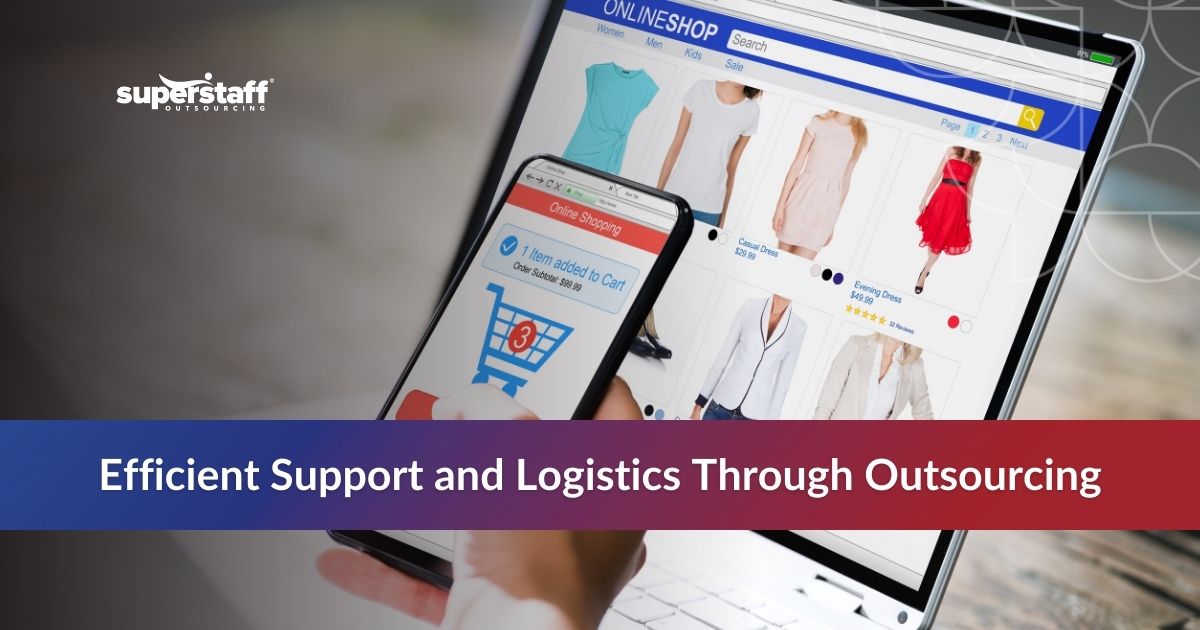
Online orders surge one month, then nosedive the next—how can logistics firms keep up without bleeding resources?
The golden era of non-stop e-commerce growth has evolved into something more volatile. While online shopping continues to dominate, the pace and predictability of demand have shifted dramatically. One month, warehouses are overwhelmed with backlogs. Next, they’re eerily quiet. For logistics providers, this unpredictability comes at a high cost.
Static operations built for predictability are now liabilities. This raises a pressing question: how logistics providers can stay profitable amid fluctuating e-commerce demand, while ensuring long-term logistics profitability.
To navigate this new normal, companies must adopt flexible, cost-efficient models that can stretch during peak seasons and shrink during lulls—without compromising service quality. The answer isn’t just automation or AI, though both play a role. The secret lies in resilience: adaptable workforce structures, variable cost models, and the strategic use of outsourcing.
This blog dives into how logistics providers can build profitable systems that hold steady, no matter how wild the e-commerce ride becomes.
Rigid Logistics Systems Can’t Keep Up
Unpredictable e-commerce cycles highlight how logistics providers can stay profitable amid fluctuating e-commerce demand—or more accurately, how they often don’t. Most logistics infrastructures were designed for consistency. They run best on stable order volumes, predictable routes, and a fixed number of workers moving packages from point A to B. But sustaining logistics profitability becomes harder when demand constantly shifts.
When demand suddenly spikes, these systems buckle under pressure. Then, when demand dips, those same systems become costly anchors. Warehouses, leased based on long-term contracts, sit half-empty. Trucks and drivers are underutilized. Salaries continue even when there are no shipments to process. In short, the cost of staying “ready” becomes a drain on logistics profitability.
This is the first wake-up call for logistics firms reevaluating how logistics providers can stay profitable amid fluctuating e-commerce demand. The industry must shift from rigid to responsive. Logistics profitability is no longer about optimizing for efficiency alone—it’s about being flexible enough to adapt without missing a beat.
A Flexible Workforce Is a Profitable Workforce

The second wake-up call centers on labor. Most logistics companies are heavily dependent on manpower, from call centers handling shipment inquiries to teams managing order tracking, dispatch, and customer complaints. During demand surges, having too few people leads to long response times and missed SLAs. During downturns, having too many staff becomes a financial liability—again impacting logistics profitability.
A core part of how logistics providers can stay profitable amid fluctuating e-commerce demand is workforce flexibility. And that doesn’t mean simply hiring and firing. Today’s smart logistics firms tap into a mix of full-time staff, temporary hires, and—most critically—outsourced teams that can ramp up or down quickly.
Partnering with offshore and nearshore providers makes it possible to build always-on support, without the fixed costs. Teams in the Philippines or Colombia can run 24/7 operations across different time zones, covering late-night peak orders and morning lulls in real time. This agility directly contributes to logistics profitability by avoiding overstaffing and maintaining service quality year-round.
This flexibility is essential to solving how logistics providers can stay profitable amid fluctuating e-commerce demand without relying on layoffs or panic hires during every market swing.
Tech Makes Operations Smarter, Leaner
Even with the most agile teams, logistics firms won’t reach true resilience without visibility. Inconsistent demand makes planning difficult, but the right tech tools can turn chaos into manageable workflows and improve logistics profitability.
Digital transformation in logistics isn’t new, but it’s more urgent than ever. Real-time tracking solutions, demand forecasting software, and AI-powered inventory management systems help reduce guesswork. They make it possible to see what’s coming, reallocate resources, and identify inefficiencies before they become profit killers.
More importantly, outsourcing the management and support of these systems adds another layer of cost control. Instead of hiring full-time IT and analytics staff, logistics firms can partner with offshore support teams that monitor platforms, ensure uptime, and resolve issues quickly—without the payroll burden, preserving logistics profitability.
When considering how logistics providers can stay profitable amid fluctuating e-commerce demand, think of technology not as a replacement for humans but as a multiplier. When combined with a flexible workforce, it creates a dynamic system that can pivot in response to unpredictable consumer behavior while safeguarding logistics profitability.
Outsourcing Aligns Costs with Demand
At the heart of modern logistics profitability is one powerful idea: pay for what you use. Fixed costs are out. Variable, usage-based cost models are in. That’s exactly where outsourcing becomes a game-changer.
When thinking about how logistics providers can stay profitable amid fluctuating e-commerce demand, outsourcing provides an unmatched level of elasticity. Rather than investing heavily in new warehouses, customer service teams, or IT infrastructure, providers can tap into outsourced capabilities as needed.
For example, outsourced customer experience (CX) teams can be scaled up during the holiday season and scaled down right after, without breaching any contracts or creating legal headaches. Track-and-trace services managed by offshore agents ensure customers are always informed—improving transparency without overburdening core staff. Document verification, POD processing, and carrier coordination tasks can all be handled by external support teams that cost a fraction of in-house teams.
This model isn’t just about saving money—it’s about making the cost of operations match real-time revenue flow. And that is the smartest way logistics providers can stay profitable amid fluctuating e-commerce demand while protecting long-term logistics profitability.
Partnerships Drive Agility and Growth
Smart outsourcing doesn’t happen by accident. It requires the right partners—ones who understand the logistics sector, speak your customers’ language, and can deliver high-quality work at scale. That’s why so many logistics providers are turning to BPO hubs in the Philippines and Colombia. These regions offer a strong talent pool of English-speaking professionals trained in logistics support, all of which contributes to sustained logistics profitability.
If you’re wondering how logistics providers can stay profitable amid fluctuating e-commerce demand while ensuring a seamless customer experience, look no further than these BPO hotspots. Whether it’s last-mile delivery support, driver dispatch, or order coordination, specialized offshore teams allow logistics companies to focus on strategic growth instead of routine tasks.
Nearshore options are also rising in popularity, especially for U.S.-based companies. These partners reduce latency and cultural barriers while still offering cost savings. The result? Logistics companies can maintain agility, meet service expectations, and reduce burnout among in-house teams—all while strengthening logistics profitability.
In short, partnerships are the secret sauce behind every profitable logistics firm operating in a high-variance market. And when executed strategically, they form the bedrock of logistics profitability in a rapidly evolving e-commerce landscape.
How Logistics Providers Can Stay Profitable Amid Fluctuating E-Commerce Demand
In today’s volatile market, the question isn’t whether disruptions will happen—it’s how companies respond when they do. For logistics providers, the key is no longer scale. It’s agility. Visibility. Precision. And most importantly, the right partnerships.
By adopting flexible workforce models, embracing logistics outsourcing, and leveraging modern tech tools, logistics providers can finally break the cycle of over-investing during boom times and cutting corners during busts. Instead, they can build a sustainable model that delivers profits regardless of seasonality or shifting consumer trends.
If you’re a logistics leader asking yourself how logistics providers can stay profitable amid fluctuating e-commerce demand, it’s time to stop reacting and start redesigning your operations around long-term logistics profitability.
At SuperStaff, we help logistics companies like yours build resilient, high-performance teams that adapt to demand without draining your resources. From 24/7 customer service to track-and-trace, dispatch, and freight documentation support, our offshore and nearshore teams are trained to keep your logistics engine running—profitably, flexibly, and efficiently.
Let’s talk about how SuperStaff can future-proof your logistics operations. Because when demand fluctuates, resilience—and logistics profitability—win.






